Open Journal of Chemistry
A SET route to Ethyl Carboxylic Acid from Ethanol and Carbon Monoxide
Ragnar Larsson*
Cite this as
Larsson R (2020) A SET route to Ethyl Carboxylic Acid from Ethanol and Carbon Monoxide. Open Journal of Chemistry 6(1): 017-020. DOI: 10.17352/ojc.000019As a hypothetical experiment the reaction between carbon monoxide and ethanol to form an ethyl carboxylic acid has been considered. The SET model for catalysis is used. The effect of the catalyst COS on the reactivity of these two species is found to lead to the expected result.
Introduction
Among different routes of synthesis of carboxylic acids, one is mentioned as the oxidation of alkanols by strong oxidants [1].
But what about the situation in ‘prebiotic’ times, when the atmosphere was more or less reductive? One possibility that we will penetrate in this paper is that carbon monoxide reacted with, at the time available, ethanol (eqn 1).
C2H5OH + CO ---→ C2H5C(=O) OH (1)
In order to make the reaction posssible, a catalyst must have been operating. We willl suggest that this catalyst was carbonyl sulfide, COS, appearing in the atmosphere from volcanic eruptions. It has been shown to be a possible catalyst in many life-creating reactions [2,3], such as ‘condensation’ of amino acids to form proteins (2) and the formation of many constituents of RNA [3]. As is otherwhere described in detail [4,5], the action of the catalyst is supposed to take place via vibrational resonance between reactant and catalyst. In this way, energy is transferred from an interatomic vibration of the catalyst to a vibration within the reactant with the same or similar frequency. This transfer goes on, up to the point when the reactant has achieved an energy amount, that we call the ‘energy of activation’. This in turn, results in reaction!
Hence this model of catalysis has been called ‘Selective Energy Transfer, SET [6].
Inspiration for SET
The observation [7,8] that in catalytic reactions, when conditions, such as the character or amount of the support material, were changing for one and the same reaction, the energy of activation changes stepwise. The fact that the size of each step was like a quantum of the vibration involved, directed our thoughts towards something like SET.
Support for SET
In this section we quote some reseach reports where the utility of SET are clearly seen [9-12].
In [9] the spectroscopic data indicate that the stretcing vibration of the single bond N-O is the ratedetermining step. Further analysis showed the anharmonicity constant as
3.4cm-1, a finding to compare with the spectroscopic value, 3.2 cm-1, [10]; thus, supporting the use of SET.
[11] is an important paper showing the establishment of an isokinetic temperature even if the frequency of catalyst (w)and the freqency of reactant (ν) are not quite the same, and showing a minimum at (ν) = ω. This shows that the so much decried concept of an isokinetic temperature is mathematically treatable as well as physically observable. This is in favour to the SET model.
In [12] the experimental data of prof. Keane are tretaed graphically to show that the Arrhenius lines of slightly differing catalysts cut in one and the same point, with the abscissa indicating the isokinetic temperature of the system, Tiso = 669 ± 2 K.
When using the formula derived in [11], we obtained Tiso = 669.2 K. This agreement between calculated and experimental data is - also – in favour of the SET model.
CO as reactant
As carbon monoxide is not usually seen as a reactant for organic chemical synthesis, one must obviously change the properties of CO somewhat in order to get it reactive. This change might be performed by interaction with the catalyst, COS [2].
Orbital pattern of CO
In the range of interest for chemical reaction, the carbon atom - as well as the oxygen one – uses four different atomic orbitals, viz., one 2 s orbital and three 2p orbitals. These last-mentioned orbitals are directed perpendicularly to each other and we designate them therefore as 2px, 2py and 2pz, where 2pz is perpendicular to the plane formed by 2px and 2py.
When they are part of a molecule, the 2s and the 2px can form two sp orbitals, one in the direction of the bond, and one (usually non-bonding) in the oppposite direction (Figure 1). The sp-orbital directed along the x-axis can form a bond wih another atom, in this case oxygen, that has a similar set-up of orbitals (Figure 2). Remaining around the carbon atom are the two 2py and 2pz, which can form π-bonds with an adjacent atom (Figure 2).
These orbitals should be filled by a total of ten elctrons; four from the carbon and six from the oxygen. One can note that the π y orbital, in the same plan as the C – O single bond, recieves one electron from the carbon; one goes into the sp binding orbital and two are in the nonbonding sp – orbital (Figure 3).
The interference of CO and the catalyst COS
The SET model of catalysis implies that the frequency of a certain vibration of the catalyst should equal that of a vibration in the reacting molecule. The simplest vibration of CO (in the ground state), the CO stretching, according to Herzberg [13], is 2170.21 cm-1. This value is slightly too high for the vibration to come into resonance with the very strong vibration of COS, 2079 cm-1, [10]. Therefore, no changes of the vibratonal state of CO are expected as such a resonance is related to the vibrations and these – in turn – are related to the mass of the atoms involved. If no effects from the catalyst emission of light at 2079 cm-1 can be traced in the vibrational spectrum of CO, one must conclude that any effect from this radiative source must instead have struck the electron clouds of the π y and π z orbitals. In Figure 3 we indicate the electron heritage in these two p orbitals. Even if one cannot – by principle - distinguish between one electron and another, one can trace a difference between the π y and π z orbitals:
In the first-mentioned orbital operating in the same plane as the sp bond, there appears an overload of negative charge that might protect and strengthen the bond between the C and O atoms. This means, rather, that the π z bond is somewhat weaker than its partner (cf. following section).
From sp3 to sp2
As we suspect that the influence of the catalyst radiation on the CO molecule is such that the electron clouds in the π- -orbitals are disturbed or even destroyed, the findings in the above section is of great importance. This means, that if the influence is of a destructive type, it is of importance to know if it is the π z or the π y orbital bond that is the weakest one.
As it is suggested above that the π z bond is the weakest one, a heavy interaction with the catalyst would imply that this bond is actually broken, leaving one 2pz on the carbon and one 2pz orbital on the oxygen, both half-filled. This would leave the carbon atom with one sp orbital and one p-containing π y orbital, all in one plane. Or in other words, the carbon atom adopts a plane of bonding, having an sp2 orbital pattern implicating a triangular arrangement of its neighbours. Now, one of the triangle’s corner is the O-atom, that is obvious. But what about the other two, required by the sp2 rule?.
The best one can imagine is that the line from the center of the C-atom to the non-bonding sp orbital from the carbon atom takes on the rôle of the bisector for the imagined triangle having its mid-point in the C-atom. This means that the just mentioned sp-orbital is split to make the two remaining corners of a triangle (cf. Figure 4). Thus a possibility for bonding to two neighbouring atoms has opened.
Excitation of ethanol
Before discussing the ethanol case, one must observe, that resonance appears when the ratio of the frequency of reactant and the frequency of catalyst is not only 1:1 (perhaps most frequent) but also 2:1 or 1:2 ( not un-frequent) or even perhaps 3:1, 3:2 , 2:3 or 1: 3.
Let us now turn to the other member in formula (1), ethanol or any other alkanol. Obviously it is needed, for a reaction to take place that a route is created for the CO molecule to glide in between CH2 and OH. If one considers the IR spectrum of ethanol from [14 ], i.e. Figure 5, one notes that a strong band appears at 1045 cm-1.The corresponding vibration has been assigned as a C-O stretching one by Plyler [15] for a frequency of 1066 cm-1 ( which is the mean of the values for two well resolved bands [14] as well as of 1045 and 1087 cm-1, presented in Figure 5). From a SET point of view we will concentrate on the 1045 cm-1 part of the doublet shown in the spectrum. Here one can see an obvious possibility for a resonance with the strong COS vibration at 2079 cm-1:
ω = 2 × v (2)
where ω is the frequency of the catalyst and v is the frequency of the reacting species. This relation means that if, e.g., six quanta of the reacting molecule are needed for a certain reaction, the energy coming from exacly three quanta of the catalyst system will execute the reaction.
Creation of a point of attack
Thus, the C-O bond in ethanol might be split by the assistance of the catalyst COS. This means that a situation arises where two molecular fractions are created, R1-C* and R2-O*, here the asterisk denotes a half-filled orbital. These orbitals are thus ready to form new bonds with other atom groups having one free valency each. But they can also recombine between themselves, re-creating the C-O bond. This latter pssibility must be abandoned and this means that the C-O bond should be excited just up to near the limit for scission. In this way a hole in the molecule along the C-O bond has been shaped allowing two ‘foreign’ free valencies (*) to enter.
The final reaction
One now can realize that there are two groups, with each one able to deliver free valencies; one is the carbon atom itself delivering the residues of the previously non-bonding sp orbital (Figure 4) and the other is the two parts of ethanol, described above.
If these groups are combined, one gets
C* + R1-C* --→ C – C-R1 (3)
and another one
C* + R2- O* --→ C-O-R2 (4)
In the present case one notes that * C-R1 equials * CH2 -CH3,
and R2 = H.
Therefore one can write, as the carbonyl group is already present, a formula for the product:
O =C (OH) CH2.CH3 (5)
Conclusions
It has been shown, that there is a route on which the ethyl carboxylic acid can be formed: CH3- CH2-C (=O) OH.
The catalyst, used in previous investigations [2,3] and now used also in this case, can in spite of its simplicity direct reactions to happpen that are of direct importance for the origin of life.
The author gratefully acknowledges the economic support from the University of Lund as well as its Department of Chemical Engineering.
- (2020) Encyclopedia Britanica; Synthesis of Carboxylic Acids.
- Larsson R, Malek A (2019) The transformation by catalysis of prebiotic systems to useful biochemicals: A perspective based on IR spectroscopy of the primary chemicals. I. The synthesis of Peptides by the Condensation of Amino Acids. Appl Sci 10: 928.
- Larsson R, Malek A, Odenbrand I (2020) The transformatlon by catalysis of prebiotic systems to useful biochemicals: A perspectve based on IR spectroscopy of the primary chemicals. II. Catalysis and the Building of RNA. Appl Sci 10: 4712. Link: https://bit.ly/3hMoj0Y
- Larsson R (2013) Concluding remarks on the theory of selective energy transfer and exemplification on a zeolite kinetics study. Monatsh Chem 144: 21-28. Link: https://bit.ly/31FraDt
- Larsson R (2018) A SET Approach to the Interplay of Catalysts and Reactants. Catalysts 8: 97. Link: https://bit.ly/2YQ8ZsW
- Larsson R, Borowiak MA (2001) A Study on Energy and Time description of the Catalytic act with Selective Energy Transfer and Impulse Oscillation Models. J Mol Catal A: Chemical 166: 39-45. Link: https://bit.ly/32AL8OW
- Larsson R (1987) On the Stepwise Change of the Activation Energy of Catalytic Reaction. Z. Phys. Chemie, Leipzig 268: 721-732.
- Larsson R (1986) On the Activation Energy of the Electrochemical Reduction of Oxygen. J Mol Catal 38: 71-79. Link: https://bit.ly/3jsNciF
- Larsson R (1989) On the Catalytic Decomposition of Nitrous Oxide over Metal Oxides, Catalysis Today 4: 235-251. Link: https://bit.ly/3gMg57M
- Herzberg G (1945) Infrared and Raman Spectra of Polyatomic Molecules, Van Nostrand, Princeton NJ. Link: https://bit.ly/3hKkyJs
- Larsson R (1989) A Model of Selective Energy Transfer at the Active Site of the Catalyst. J Mol Catal 55: 70-83. Link: https://bit.ly/2YOD3VD
- Keane MA, Larsson R (2007) Isokinetic behaviour in gas phase catalytic hydrodechlorination of chlorobenzene over supported nickel. J Mol Catal A Chmical 268: 87-89. Link: https://bit.ly/3hK1M56
- Herzberg G (1950) Spectra of Diaomic Molecules, 1st ed. Van Nostrand Co, Inc. New York, NY, USA.
- Database of ATR-FT-IR spectra of various materials (2015) ATR-FT-IR spectra of conservation-reated materials in the MID-IR and FAR-IR region. Ethanol, Institute of Chemistry University of Tartu, Estonia
- Plyler EK (1952) Infrared Spectra of Methanol, Ethanol, and n-Propanol. J Res Nat Bureau Standards 48: 281-286.
Article Alerts
Subscribe to our articles alerts and stay tuned.
 This work is licensed under a Creative Commons Attribution 4.0 International License.
This work is licensed under a Creative Commons Attribution 4.0 International License.
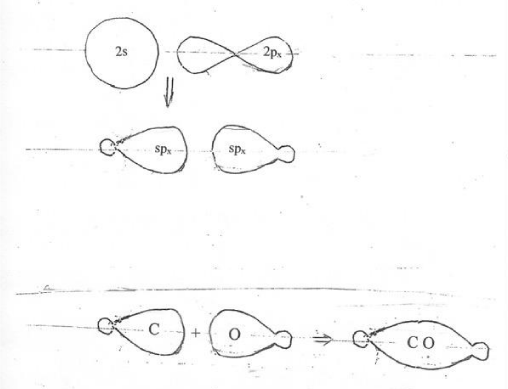
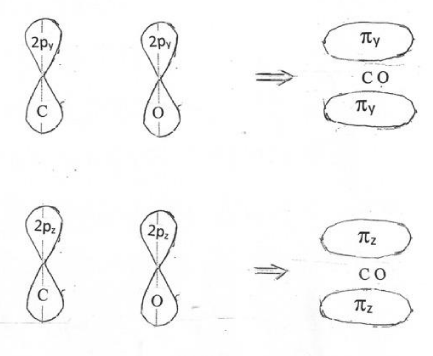
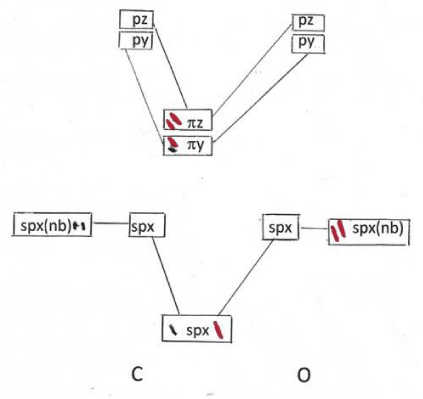
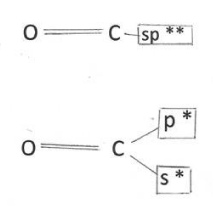
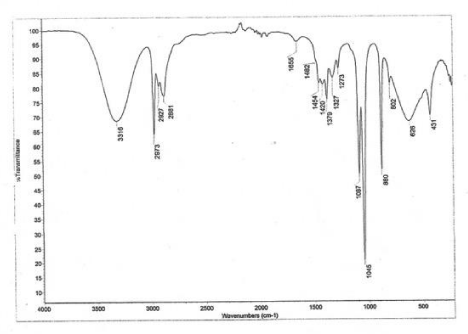
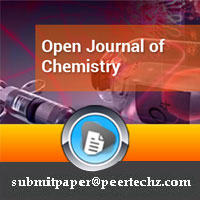
 Save to Mendeley
Save to Mendeley
